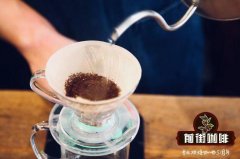What are the special characteristics of Sidamo Sakuran Coffee? introduction to the flavor characteristics of Essex Sakui coffee

Professional coffee knowledge exchange more coffee bean information please follow the coffee workshop (Wechat official account cafe_style)
Introduction to the Flavor characteristics of Qianjie Coffee-Sidama Sakuran
In 2017, the Ethiopian DW raw bean company sent their coffee beans to TOH (the Taste Of Harvest), a competition hosted by the African Coffee Association, and the tanning batch won the championship of TOH Ethiopia. This batch of raw beans, in the capacity of the champion, is named "Sakuran".
Huakui Coffee, located in Hambella, Humbera is located in GUJI, the largest coffee producing area in Ethiopia, and the administration belongs to the state of Oromia. Hambella is the highest coffee-producing area in Ethiopia (Harrar is the highest in Ethiopia), facing the west and kochore across the mountain, and to the east and south, respectively, to the shakiso,Uraga and Kerchaz producing areas of Guji.
At present, there are about 20 processing plants of various sizes in Hambella producing areas. Dimtu, the core production area of Hambella of DW Company, has four manor processing plants, namely "Buku abel", "Buku saysay", "Haro soresa" and "Tirtiro Goye".
"good coffee is hard to come by": in the mountains above 2000 meters above sea level
Most of the coffee farms in Ethiopia are still in the original state, and the local farmers just go to the mountains to pick, choosing only all red fruits, fully ripe coffee cherries, all manual picking, African scaffolding to dry, limit the thickness of the fruit layer and turn it 24 hours a day, to ensure uniform sun exposure and ventilation, and to more accurately grasp the degree of fermentation. most local treatment plants also use the original sun treatment. According to experience, fermentation and drying, so the quality is very unstable.
Red brown organic soil, annual rainfall more than 1200mm, altitude, temperature difference between day and night, manual picking of pure red fruit and low temperature fermentation under the unique natural environment of the manor. The plots where red fruits are harvested are more concentrated, and the new treatment fields are closer, which can ensure that red fruits can be collected and disposed of as quickly as possible. The whole treatment process is only managed more finely under the guidance of scientific measuring instruments, and there is no improved process that "breaks the tradition". The red fructose content is more than 21 before the sun treatment begins, so the sweetness is quite high.
[Sidamo Sakuran] was soaked at 9 o'clock last night and filtered out at 9 o'clock this morning. The maximum ratio of powder to water [1:12] was 4: 02 ", [1:10] 3: 32, [1:8] 2: 46".
[powder / water ratio 1:8 | 30g powder: 240g water]
Flavor: lemon, sauce, passion fruit, plum, Huigan has caramel, honey, strong smell of fermented wine. The overall taste is relatively full-bodied, the acidity is obvious, and the finish is long.
END
Important Notice :
前街咖啡 FrontStreet Coffee has moved to new addredd:
FrontStreet Coffee Address: 315,Donghua East Road,GuangZhou
Tel:020 38364473
- Prev

Introduction to the characteristics, flavor and taste of Ethiopian coffee beans
Professional coffee knowledge exchange more coffee bean information please follow Coffee Workshop (Wechat official account cafe_style) Street Coffee-Ethiopian Coffee Brand introduction Ethiopia is known as the cradle of human beings. Legend has it that coffee was discovered by an Ethiopian shepherd named Kaldi, who became extremely energetic after eating a bright red berry and discovered coffee.
- Next

What kind of Coffee is Sidama Coffee A brief introduction to Candlestick Coffee
Professional coffee knowledge exchange more coffee bean information please follow the coffee workshop (Wechat official account cafe_style) Qianjie Coffee-Sidamo production area 90 + Candlestick brief introduction Sidamo grows in the southernmost Ethiopian plateau between 4600 and 7200 feet above sea level (Sidamo Province), is a famous boutique coffee area in southern Ethiopia, bordering Kenya and located in Gemma
Related
- Beginners will see the "Coffee pull flower" guide!
- What is the difference between ice blog purified milk and ordinary milk coffee?
- Why is the Philippines the largest producer of crops in Liberia?
- For coffee extraction, should the fine powder be retained?
- How does extracted espresso fill pressed powder? How much strength does it take to press the powder?
- How to make jasmine cold extract coffee? Is the jasmine + latte good?
- Will this little toy really make the coffee taste better? How does Lily Drip affect coffee extraction?
- Will the action of slapping the filter cup also affect coffee extraction?
- What's the difference between powder-to-water ratio and powder-to-liquid ratio?
- What is the Ethiopian local species? What does it have to do with Heirloom native species?

